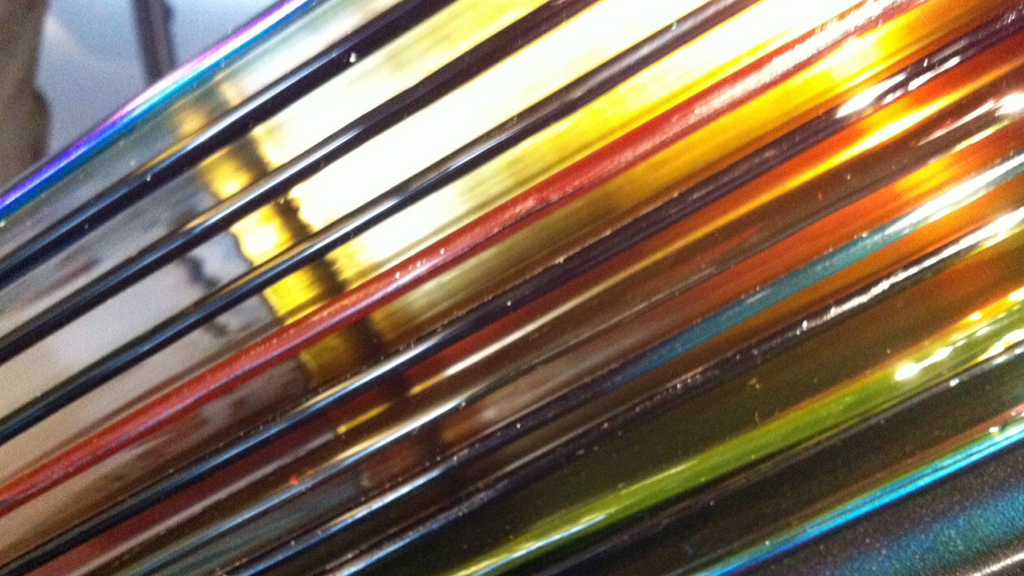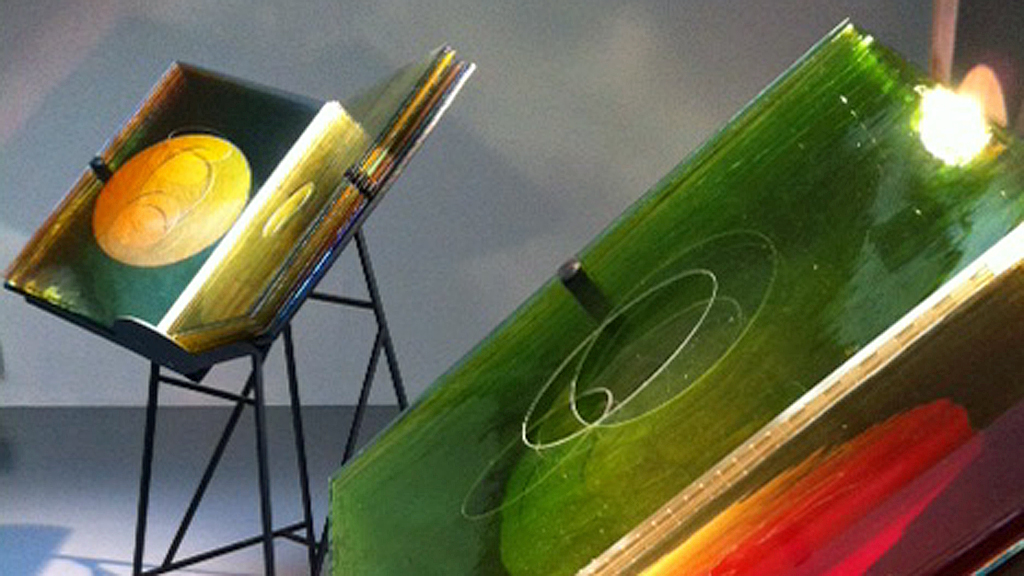Celebrating books… with pages made of glass
The latest artwork by Olafur Eliasson, whose huge sun enchanted 2 million people when it graced the Turbine Hall at Tate Modern almost exactly a decade ago, is smaller but just as captivating.
He brought the sun to London, waterfalls to New York City and a rainbow to Aarhus, Denmark.
Now Olafur Eliasson has created nine enormous books, each containing 12 pages made from glass, hand-blown by some of the last European craftsmen blowing glass in this way.
There’s no text here, but they’re still books to be “read”, Eliasson told me as he launched A View Becomes a Window in Madrid. These books are a “celebration” of the book, at a time when it’s under threat by the digital revolution.

In praise of books
“I love books, but I’m not afraid of that. In my experience, the printed book has been taking on its own pride. The kind of paper used matters, typography matters, books are books again.”
As for his glass books with some pages cut by concentric circles: “I’ve cut holes in them, but it’s not a void. Looking through the holes, you’re reading the page you’re about to read soon, and it’s about what is about to happen and what has happened.
“When you read a great novel, at that moment the novel starts to read you, you think ‘I know that feeling’. I’m interested in the moment when the narrative becomes a producer of reality.”
These glass books look different depending on the time of day, where the light that reaches them, where the “reader” stands, what’s reflected in them.
‘A window to nature’
There are orangey-red orbs that feel almost a reprise of Eliasson’s earlier sun in Tate Modern. They feel vast, a reminder of our place in the universe. As Lady Elena Ochoa Foster, the publisher, called them, “a window to nature”.
In some senses this isn’t a huge departure for an artist who’s always been obsessed with light, about what it does to us and what we do to it. Remember those people lying down under his sun, doing the equivalent of snow angels, their reflections moving in the ceiling above them?
He says his art isn’t about him saying “here is a work of art”. “The potential lays within how it affects you and asks you to co-produce it, to be a participatory element and for you to be a person saying ‘I have to work, I have to give something here’.”
